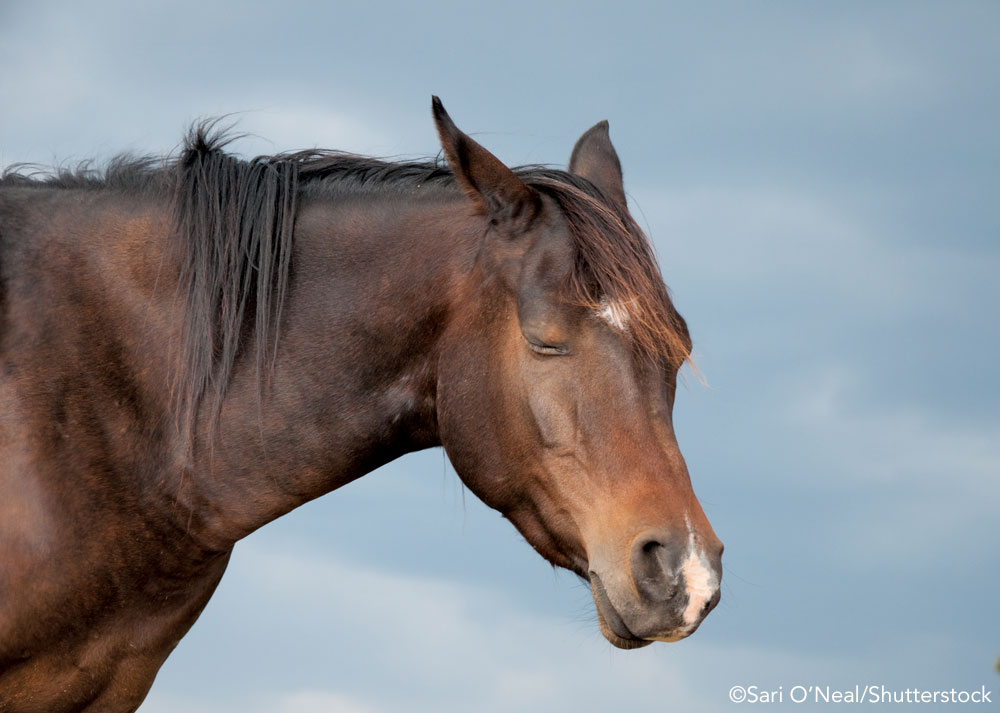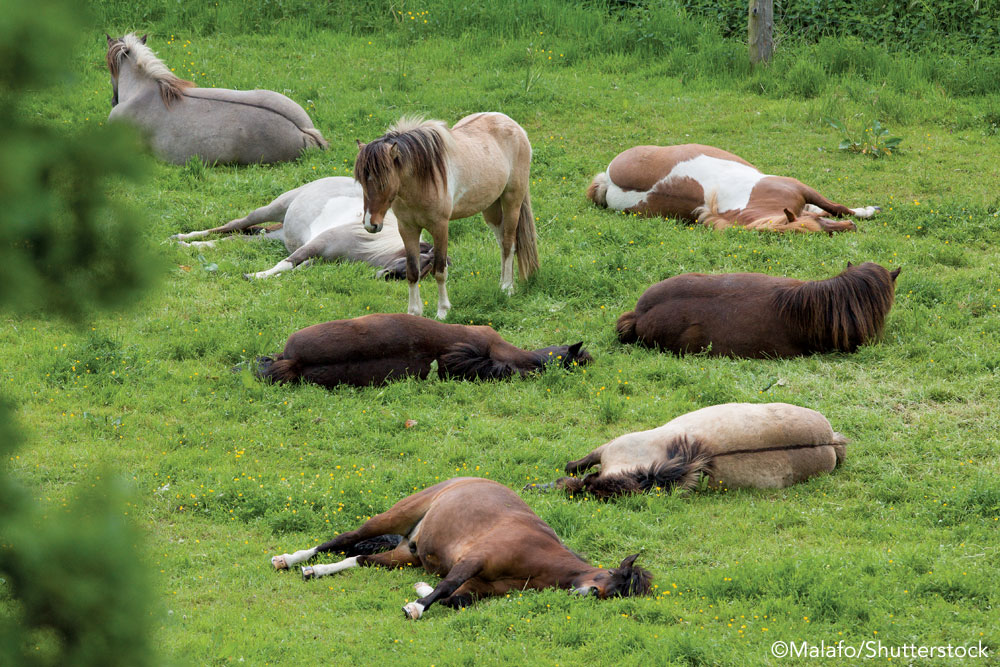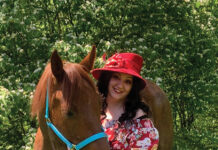You’ve probably caught your horse dozing in this quintessential pose: one hind leg relaxed and bent while the other three legs are locked in place, head hung low and lower lip drooping. But does a horse actually feel refreshed after such a standing siesta? How often do they need to lie down for a real snooze? Read on to discover some secrets of equine sleep.

Standing Up for Safety
As a prey animal, a horse’s natural inclination is to avoid too much time lying flat out on his side asleep, oblivious to imminent predator danger. However, horses do need some deep sleep, known as rapid eye movement (REM) sleep, regularly. A typical horse’s night will involve grazing, dozing standing up, and periods of lying flat out to get some REM sleep, but only in short sessions. Although horses on average require roughly two to three hours of REM sleep a night, this deep sleep typically occurs in bursts of 10 to 20 minutes at a time.
Horses will only lie down and allow themselves REM sleep if they are completely comfortable in their surroundings. For horse owners, this means ensuring a quiet, safe haven wherever your horse spends his night, either in a stall or pasture. Owners of REM-deprived horses may notice changes over time in their horses’ behavior, such as nervousness or irritability and decreases in physical performance. This indicates that deep sleep is vital for a horse’s overall well-being. Here are a few tips to keep in mind when considering your horse’s sleep health.
Stall Space
Most horses will not lie down if they feel the space is too small, and for good reason. A horse that lies down and can’t get back up—either because the space is too small or his legs are too close to a wall—gets “cast.”
This situation may require expert help to safely get the horse standing again. Most adult horses, other than drafts or large warmbloods, are comfortable enough to lie down in a box stall that is 12 feet by 12 feet.
Bedding
Just how comfy should a stall be to entice a horse to lie down? Straw bedding is adequate for sleep comfort if it’s deep enough to provide cushioning, insulation and absorbency.
The same can be said for shavings, unless a rubber mat is in place. If that’s the case, then enough shavings to provide absorbency are fine.
Darkness
When you leave the barn for the night, turn off overhead stall lights. If lights are required for security, consider motion-activated lights or strategically placed illumination that doesn’t shine into each stall.
Artificial light can affect your horse’s sense of day length and interfere with normal sleep/wake cycles, so keeping lights off or as dim as possible at night is best.
Peace and Quiet
Bustling training barns with hectic show schedules or busy breeding barns may have activity going on at almost all hours of the night, depending on the season. These circumstances are where we most commonly see a horse suffering from REM sleep deprivation.
If your horse lives at such a barn and you’re concerned about his sleep habits, consider where his stall is in relation to what’s going on. If it’s possible to move him to a quiet end of an aisle, this might help.
If you’re at a show or on a lengthy road trip, be sure to help your horse catch up on his sleep as soon as he gets back home. Incorporating some of the tips above when out on the road can help as well.
Of course, like with some humans, there are horses out there that can sleep through just about anything. Such horses snooze so soundly that even us sleep-deprived owners can become a bit jealous. With these horses, some of us might enjoy the benefit of a few tips from them!

Field Guide to Equine Sleep
Considerations for a pasture aren’t quite as demanding for a good night’s sleep; for example, size constraints aren’t usually a worry outdoors and most horses are content to lie down on grass or dirt.
Instead, consider herd dynamics. If there is a boss horse that is a known bully, your horse may not feel comfortable enough in the herd to lie down at night, depending on his position in the social pecking order. This is an especially important aspect to consider when introducing a new horse into a herd.
Protection from the elements is another aspect to consider in the pasture. Many horses can be found curled up on snow in their comfy blankets, but excessive wetness may preclude lying down long enough to catch some decent shuteye. Access to a run-in shed is helpful if the environment necessitates it.
This article originally appeared in the March 2019 issue of Horse Illustrated magazine. Click here to subscribe!






